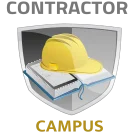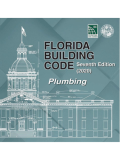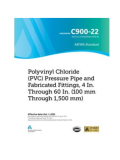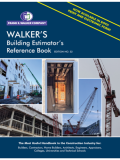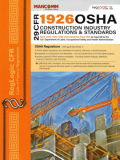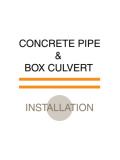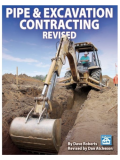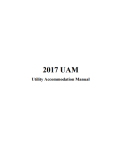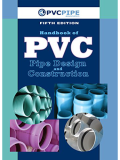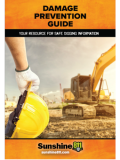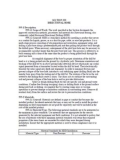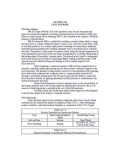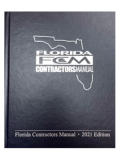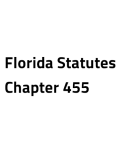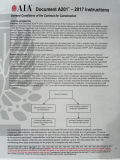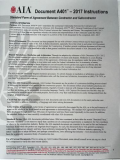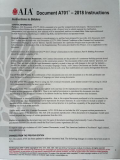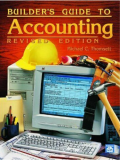Florida Underground Utility Contractor License
Florida Underground Utilities contractors can legally engage in contracting involving the following type of work:
- Main water distribution systems
- Main sanitary sewer collection
- Storm sewer collection
- Continuation of utility lines (from the main systems to a point of termination up to and including the meter location for the individual occupancy)
- Property line sewer collection systems on residential or single-occupancy commercial properties
- Multioccupancy properties at manhole or wye lateral extended to an invert elevation as engineered to accommodate future building sewers
- Storm sewer collection systems at storm sewer structures
- Auger boring
- Jacking and boring
- Directional drilling
- Wet and dry taps
- Trenchless technologies
- Grouting
- Slip lining
The scope of an underground utilities contractor includes work on both private and public property.
A Florida Underground Utility and Excavation Contractor may not install piping that is an integral part of a fire protection system as defined in s. 633.021 beginning at the point where the piping is used exclusively for such a system. For this type of installation a Florida Fire Protection V Contractor License is required instead.
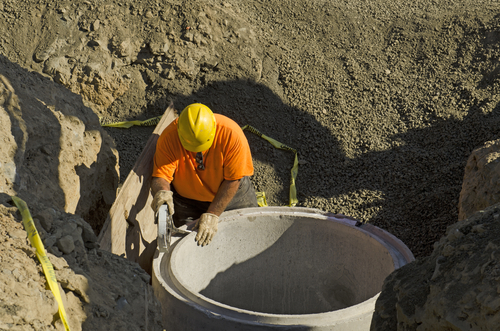
How to Get a Underground Utilities Contractor's License in Florida
- Be 18 years of age.
- Pass all parts of the exam(s) (within four years of the first attempt).
If an applicant has a Bachelor's degree in building construction or a related field, as well as a 3.0 GPA or higher, the applicant is only required to take the business exam. - Pay the fee for the Application.
- Complete the application form using the Online Services, or the Printable Application.
- Be of good moral character.
- Obtain worker's compensation and general liability coverage.
- Demonstrate financial responsibility by submitting a Credit Report:
- 660 FICO credit score or higher (applicant must submit a bond or irrevocable letter of credit if below 660 - FICO derived).
- If FICO score is less than 660, the applicant must take a 14-hour financial responsibility course.
- If applicable, provide proof of satisfaction of liens, judgments, and bankruptcy discharge.
- Background check with Electronic Fingerprints.
- Obtain public liability and property damage insurance.
- Obtain workers' compensation or exemption from workers compensation insurance within 30 days of issuance of their license.
- Satisfy one of the experience requirements set forth by the CILB:
- A combination of Experience and Education
- One year proved experience that applies to the category for which you are applying and a four-year construction-related degree from an accredited college (equivalent to 3 yrs. experience), or
- No less than three years of credits from accredited college-level courses, and One year of experience as a foreman, or
- Two years of credits from accredited college-level courses, one year experience as a foreman, and One year experience as a worker, or
- One year of experience as a foreman, one year of credits from accredited college-level courses, and two years of experience as a worker, or
- Four years of experience as a foreman or worker of which at least one year must have been as a foreman.
- The board expects the applicant to have experience in the following areas of the Underground Utilities trade:
Applicants must have experience in at least 3 of the following 5 trade areas:- Main Sanitary Sewer Collection Systems
- Main Water Distribution Systems
- Storm Sewer Collection Systems
- Excavation and Earthwork
- Trenchless Installations
- Military Service
Note: As part of the application applicant must submit the Fee Waiver and Military Service Verification for licensure- One year of experience as a foreman applicable to the category for which you are applying, and three years of military service.
- One year of experience as a worker or foreman applicable to the category for which you are applying, one year of experience as a foreman, and two years of military service.
- Two years of experience as a worker or foreman applicable to the category for which you are applying, and one year of military service.
- A combination of Experience and Education
- Pass the Underground Utilities and Business & Finance exams.(sign up for the exams)
- Submit the complete Underground Utilities application form to:
Department of Business and Professional Regulation
2601 Blair Stone Road
Tallahassee, FL 32399-0783
Florida Underground Utility Contractor Exams
Florida Underground Utility Contractors must pass two exams prior to obtaining their license. Do not sign up to take your exams until you obtain your books and begin studying for them!
Florida Underground Utility Contractor License Exam
- Testing Method: Computer-based testing
- Testing Company: Pearson Vue©
- Number of Questions: 80
- Types of Questions: Multiple Choice
- Time Allowed: 300 Minutes
- Minimum Passing Score: 70%
- Subjects Involved:
Pre-Installation (20%)
- Performing a visual inspection of site and equipment
- Equipment needed for site work ability to identify obstructions and access points
- Removal of site debris
- Types of equipment
- Figuring quantity of materials
- Review plans and specifications and recommend changes
- Construction techniques
- Local utility specifications
- Plans and materials specifications
- Latest pipe technologies
- Estimating
- Preparing shop drawings
- Standards (e.g., ASTM, AWWA)
- Materials specifications and products
- Ability to organize, read, and understand specifications and plans
- Reviewing federal, state, and local codes and ordinances
- Pre-installation requirements
- Local code requirements and jurisdictions of utility districts
- References, sources of codes and ordinances
- MSDS’s
- SWPPP (Storm Water Pollution Prevention Plan)
- Determining location of excavations
- Invert elevations
- Basic surveying and layout techniques
- Safety requirements
- Recording pre-existing job conditions (e.g., location of existing utilities)
- Sub-surface ground conditions
- Digging test holes to determine water levels
- Drilling equipment and practices
- Existing utilities
- Seasonal variations
- Coordinating and directing soil preparation and testing soil and ground water
- Excavating and soil composition
- Soil and water testing procedures
- Potentially contaminated soils
- Determining burial depth and slope
- Excavation
- Surveying and leveling techniques
- Locating existing utilities and underground obstructions
- Where to find information
- When and how to notify the appropriate authority
- Permissible working conditions
- Complying with erosion control guidelines
- Erosion control guidelines
- Turbidity and testing
- Unloading, lifting and transporting pipes
- Weight capacity of front end loaders
- Cabling and rigging or other material
- Handling equipment
- Stacking and storing pipes
- Dividers
- Appropriate conditions for stacking and storing pipes
- Reading plans and specifications
- Plan scales and symbols
- Cross sections and profiles
- Geotechnical reports
- Performing a visual inspection of site and equipment
Traffic Control (5%)
- Complying with traffic control laws and contract requirements
- Traffic codes and regulations
- Ability to communicate with emergency services
- Current MOT requirements
- Erecting and positioning road signs, cones, barricades and detours
- Traffic codes and regulations
- Applying temporary pavement markings
- Traffic codes and regulations
- Managing and coordinating flaggers
- Traffic codes and regulations
- Location of stockpiled material along right-of-way
- Complying with traffic control laws and contract requirements
Excavating, Backfill, and Compaction (20%)
- Constructing trenches
- Pipe layout
- Appropriate widths for different pipes
- Surveying techniques
- Shoring techniques
- Soil types
- OSHA requirements (e.g., competent person on job site)
- Calculating excavation and backfill
- Effects of compaction
- Soil properties
- Removing trees, shrubs, and fences
- Excavation equipment
- Demolition
- Cutting and replacing pavement
- Safety
- Local specifications and regulations
- Asphalt types
- Performing dewatering
- Pumping techniques
- Well points
- Piping hook-up
- Soil permeability and drainage
- Water table
- Drawdown
- Sock drains
- Turbidity and testing
- Installing sheet piling and reinforcing requirements
- Angles of repose
- Stress supports
- Wood piling
- Metal piling
- OSHA regulations
- Utilizing trench boxes and shields
- Excavating
- Soil properties
- OSHA regulations
- Installing tunnels
- Drilling
- Excavating
- Bracing
- Surveying techniques
- Ventilation
- Safety requirements
- Dewatering
- Pumps
- Jack and bore casings
- Hydraulic jacking and boring equipment
- Hydraulic jacking and boring procedures
- Trenching in non-cohesive soil or sand
- Digging devices
- Sheet piling
- Soil properties
- Angle of repose
- Installing pipe bedding
- Appropriate types
- Determining depth or thickness needed
- Grading
- Replacing finish surfaces (e.g., asphalt, concrete)
- Appropriate asphalt and concrete types
- Testing
- Ability to layout and calculate volume and area (square footage, cubic yards)
- Grade and compaction
- Curing periods
- Local and state codes and regulations
- Installing filter fabrics and backfill migration preventers
- Soils
- Water tables
- Filter fabric
- Checking for required finish grade and invert elevation
- Reading levels
- Leveling and surveying techniques
- Proper sloping
- Installing backfill material for pipes and structures
- Different types of backfill materials
- Correct grade surveying equipment
- Grade and compaction
- Proper backfill to support existing utilities after digging
- Constructing trenches
Pipe Installation and Repairs (15%)
- Installing, replacing and repairing pressure pipes
- Types and application
- Placement
- Associated fittings
- Elevations
- Laser grade beams
- Survey instruments
- Testing
- OSHA regulations
- Local and state codes and regulations
- Installing, replacing and repairing gravity sewer pipes
- Piping materials
- Equipment
- Pipe laser equipmen
- Survey instruments and techniques
- Ground water
- Pipe slopes and grades
- Bedding requirements and placement of bedding
- Air testing
- Proper compaction
- OSHA regulations
- Assembly
- Sealants
- Preventing and testing for pipe deflection
- Trenchless installation procedures
- Local and state codes and regulations
- Installing piping for pumps
- Capacity of different size pumps
- Fittings and valves
- Installing manholes, lift stations and catch basins
- Cutting and sizing of materials
- Form work
- Concrete mixtures
- Concrete placement
- Brick masonry
- Surveying techniques
- Drop connections
- Handling
- Working in confined spaces
- Placing grout
- Mixtures
- Properties
- Setting time
- Chemical grouting
- Health risks involved
- Applications of chemical grouting
- When and what type to use
- Removing asbestos cement pipe
- Health risks
- Federal and state laws
- Proper disposal of broken cement asbestos pipe
- License restrictions
- Using hydraulic cement
- Properties
- Setting time
- Health risks and safety precautions
- Installing two or more pipes in one excavation
- Spacing requirements
- Backfill requirements
- Installing piers
- Concrete mixtures
- Reinforcing
- Form work
- Precast piers
- Anchoring
- Installing a slip liner
- Materials and procedures used for slip liners
- Installing pipe by directional boring
- Pipe and slurry
- Equipment and procedures
- Installing, replacing and repairing pressure pipes
Piping, Valves and Fittings (15%)
- Layout and determining pipes, valves, fittings and related components
- Installation
- Replacement
- Monitoring
- Appropriate use of pipes of various materials
- Appropriate use of valves, fittings, and related components of various materials
- Installing pump stations
- Basic mechanics of pumps
- Slabs
- Foundations
- Walls
- Working in confined spaces
- Installing fittings
- Types and application for use
- Installing backflow prevention devices, flow regulators and meters
- How flow regulators operate
- How to set a flow regulator
- Meter types
- Meter installation
- Regulations governing backflow prevention
- Installing pumps and motors
- Anchoring
- Piers and foundations
- Installing metal cathodic protection
- Installation
- Coatings
- Local and state codes and regulations
- Installing fire hydrants
- Types and placement
- Installing restraining mechanisms
- Thrust blocks and placement
- Straps
- Tie downs and tie rods
- Megalugs and bell restraints
- Restraining schedules’
- Forces acting on pipes
- Installing main line and service taps
- Tapping saddles
- Pressure taps
- Equipment for tapping and materials
- Piping through walls (structures, lift-stations, manholes, valve pits)
- Structures
- Lift-stations
- Manholes
- Valve pits and sleeves
- Sealing methods
- Installing pipes underwater
- Piping material and material limitations
- Anchoring
- Pipe connection techniques (cutting, welding, brazing, chemical bonding)
- Mechanical connections (threaded connections)
- Leak detection
- Hangers and supports
- Pressure testing
- Measurement
- Calculating and fitting
- Thrust blocks
- Drying procedures
- OSHA and other safety requirements
- Installing pipe supports
- Straps and hangers
- Concrete or other cradles
- Layout and determining pipes, valves, fittings and related components
Testing, Disinfecting and Job Close Out (10%)
- Preparing as-built drawings
- Testing gravity pipes
- Calculations for infiltration and exfiltration
- Required equipment
- Mandrel testing
- Lamping procedures
- Low pressure air testing
- TV testing procedures
- Testing Pressure pipes
- Test pumps
- Reading pressure gauges
- Air test charts
- Calculating for hydrostatic head over top of pipe
- Duration time of tests
- Flushing pipes before disinfecting
- Time requirements
- Safety requirements
- Injecting chlorine or disinfectant into pipes
- Safety requirements
- Application of chlorine or disinfectant
- Storage and handling of chlorine
- Pulling bacteriological samples
- Sampling procedures
- D.E.P. requirements
- Flushing pipes after disinfecting
- Time requirements
- Safety requirements
- Assemble Operating and Maintenance Manuals
- Equipment and materials specifications
- Equipment operations
- Documentation
- Perform Close Out Procedures
- Sign-off requirements
- Document submission requirements
Drainage Systems (5%)
- Installing, repairing, and replacing storm drainage systems
- Appropriate types
- Drainage requirements
- Connecting to existing systems
- Coring
- Support bedding
- Installing oversize culverts
- Appropriate types and applications
- Materials (e.g., structural plates, corrugated pipe)
- Associated fittings
- Placement
- Safety requirements
- Installing standard CMP
- How to place
- Assembly
- Installation
- Installing retention or detention systems
- Excavation
- Lining
- Shaping
- Installing perforated and underdrain pipes
- Appropriate types and applications
- Associated fittings
- Safety requirements
- Placement
- Cleaning storm sewers
- Proper cleaning procedures
- Pipe protection techniques
- OSHA regulations
- Installing, repairing, and replacing storm drainage systems
Equipment (10%)
- Digging with backhoes, trenchers and tractors
- Safety requirements
- Traffic regulations
- Rigging
- Equipment maintenance
- Ability to determine lifting capacities of equipment used
- Using overhead hoists and cranes
- Safety requirements
- Weights
- Using ventilation devices
- Safety requirements
- Toxic materials
- Proper uses of equipment
- Sewer gas trapped in existing manholes
- Air monitoring devices
- Using lasers
- Safety requirements
- Surveying techniques
- Equipment protection
- Proper setup
- Calculating percentage of grade
- Using surveying and engineering levels
- Surveying techniques
- Surveying equipment
- Run levels
- Using dewatering equipment
- Equipment, capacity, and installation of hydraulic, gas and electric pumps
- Well points and sock drain systems
- Soil types
- Rules of water management
- Dewatering alternatives
- Using compaction equipment
- Compaction equipment
- Static and vibratory compaction
- Density requirements
- Digging with backhoes, trenchers and tractors
- Official list of subjects for the Underground Utilities contractor exam
Florida Underground Utility Business and Finance Exam
- Testing Method: Computer-based testing
- Testing Company: Pearson Vue©
- Number of Questions: 120
- Types of Questions: Multiple Choice
- Time Allowed: 390 Minutes
- Minimum Passing Score: 70%
- Subjects Involved:
Establishing the Contracting Business (11%)
- Determining the Business Organizational Structure
- Business structure laws and regulations
- Fiduciary responsibilities of officers and directors
- Open vs. closed corporations
- Organizational charts and chain of responsibilities
- State and local licensure requirements
- Tax advantages and/or liabilities for various business structures
- Develop the Business Plan
- Accounting practices
- Local marketplace
- Scope of contractor license
- Establish Relationships with Other Professionals
- Accountant specialization
- Attorney specialization
- Insurance types and limitations
- Underwriting requirements for bonding
- Acquire Fixed Assets
- Advantages/disadvantages of business location
- Advantages/disadvantages of lease vs. purchase
- Obtain Insurance
- knowledge of accounting practices
- Advantages/disadvantages of various types of insurance
- Coverages and limitations of insurance
- Determining the Business Organizational Structure
Managing Administrative Duties (26%)
- Develop the Business
- Availability of staffing for business operation
- Income sources
- Markets and market share.
- Determine Outsourced Services
- Determine Business Overhead
- FICA
- Advertising costs (business cards, dues, printing, etc.)
- Communication costs (cell phones, land lines, etc.)
- Cost of sales (travel expenses)
- Federal unemployment (FUTA)
- General liability rates
- Lease expenses
- Loan financing expenses (interest, etc.)
- Medicare rates
- Rent costs
- State unemployment (SUTA)
- Utility costs
- Worker’s compensation
- Preparing Bids/Proposals
- Accounting principles
- AIA documents
- Business projections/goals current status
- Company overhead
- Contract documents
- Contract law
- Cost of financing projects
- Costs associated with growth
- General conditions costs of projects
- How to review contracts
- How to write offer
- Insurances associated with labor rates
- Labor productivity
- Statute of frauds
- Taxes associated with labor rates
- Components of valid contract
- Purchase Materials/Supplies
- Depreciative costs
- Fundamentals of Uniform Commercial Code
- Inventory system operation (FIFO, etc.)
- Invoice approval systems
- Negotiating skills
- Purchasing systems
- Receiving systems
- State sales tax laws
- Statute of frauds
- Vendors in area
- Prepare Invoices/Draw Requests
- Basic math skills
- Calculation of percentage of work completed
- Contract/subcontract documents
- How to prepare invoices/draw requests
- Lien laws
- Develop a Safety Program
- Drug testing regulations
- MSDS sheets
- OSHA regulations
- Maintain Insurance
- General terms and definitions used in policies
- Insurance policies
- Limits of insurance
- Various types of insurance
- Various types of risk
- Managing Contracts
- Contract law
- Contract scope
- Job completion schedules
- Lien laws
- Mediation and arbitration processes
- Local building code requirements
- Tort law
- Risk management
- Develop the Business
Managing Trade Operations (10%)
- Schedule Trade Operations
- Critical path method (CPM)
- Delivery times
- Manufacturing times
- Requests for information (RFI)
- Sequencing trades
- Submittals/approval/fabrication process
- Maintain OSHA/Safety Records
- Document/record retainage requirements
- Penalties for non-compliance with OSHA
- Purchase/Order Materials & Supplies
- Accounting skills
- Basic math skills
- Job schedules
- Negotiation skills
- Organizational skills
- Plan reading skills
- Quality control
- Quantity take-offs
- Terms and abbreviations on invoices
- Types of building materials
- Leasing/Purchasing Equipment
- Cost of operation of equipment
- Depreciation
- Equipment operation
- Forecasted use of purchased equipment
- Interest costs for financing
- Maintenance
- Salvage resale values
- Support equipment required for equipment
- Tax credits associated with purchases
- Training needs for equipment
- Transportation costs for equipment
- Manage Material/Tool/Equipment Inventory
- Equipment maintenance procedures
- Inventory methods
- Schedule Trade Operations
Conducting Accounting Functions (32%)
- Manage Accounts Receivable
- Accounting principles
- Basic math skills
- Computer skills
- Lien laws
- Manage Accounts Payable
- Accounting principles
- Basic math skills
- Computer skills
- How to calculate discounts
- Lien laws
- Manage Cash Flow
- Accounting
- Banking
- Basic math skills
- Financial ratios
- File Tax Forms & Returns
- Accounting principles
- Basic math
- Federal tax laws
- Property tax laws
- Record keeping requirements
- Sales tax laws
- State tax laws
- Track Job Costs
- Accounting principles
- Basic math
- Calculate Employee Payroll
- Accounting
- State & federal tax laws
- Basic math
- Employment laws
- Employment/labor laws
- Hierarchy of garnishments
- Manage Accounts Receivable
Managing Human Resources (6%)
- Hire New Employees
- Employment laws
- Discrimination laws
- Interviewing skills
- Required forms for new hires
- Background checks
- Develop Human Resource Policies & Procedures
- Employment/labor laws
- OSHA
- Chain of custody (drug tests)
- Insurance regulations
- Evaluate Employees
- Employment/labor laws
- Hire New Employees
Complying with Government Regulation (15%)
- Comply with Federal Laws & Regulations
- FEMA (immigration components)
- OSHA
- Tax laws
- National Pollution Discharge
- Elimination System (NPDES)
- Environmental laws
- Comply with State Laws& Regulations
- Chapter 455 F.S.(Business & Professional Regulation)
- Chapter 713 F.S. (Liens)
- 61G4 F.A.C.
- Worker’s Compensation
- Laws/DOR Sales/Use Tax
- Chapter 489, Part 1 F.S (Construction Contracting)
- Required continuing education
- CEU credit records
- License holder responsibilities
- Comply with Federal Laws & Regulations
- Official list of subjects for the Business and Finance exam
Florida Underground Utility Contractor Classes
Our Underground Utilities online classes prepare students for the Florida Underground Utilities exams with the State of Florida. Students learn how to find information quickly within the reference books, as well as how to solve the different math problems involved. Contractors must pass both the Underground Utilities and Business and Finance tests to get the CUC (Certified Underground Utilities and Excavation Contractor) license. Our tabbing system allows students to find information faster within their books, and our lecture videos walk you through all the steps involved in the solution of the different math problems. You can sign up for your classes at any time and receive access to lecture videos, practice questions, tabbing and highlighting instructions, as well as to step-by-step explanations on how to solve typical Underground Utility Contractor Exam Problems. The Underground Utility Contractor Classes prepare you for the trade and business exams. You can also attend live online classes as needed. All live refresher online classes are on Saturdays from 8:30 AM - 4:30 PM (ET). Florida Underground Utility Contractor Testing Schedule. You must pass all exams before applying for the Underground Utility Contractor’s License in Florida. To sign up for the Florida Underground Utility Contractor classes, simply click on the "enroll" button below and checkout; this will allow you to receive immediate access to the online Florida Underground Utility Contractor Classes. All students have access for an unlimited amount of time (until passing all the Florida Underground Utility Contractor exams needed to get the Underground Utility license). For a list of upcoming classes for the Florida Underground Utility Contractor Exams click on the link within the course description below.
Florida Underground Utilities Contractor Books
The set of books includes all required references for both the Underground Utility and Business and Finance exams. Orders placed before 2 PM are shipped the same day via UPS and a tracking number is emailed before 3 PM.
FLORIDA UNDERGROUND UTILITIES - BOOK SET WITHOUT TABS INCLUDES ALL BOOKS FOR TRADE AND BUSINESS EXAMS
FLORIDA UNDERGROUND UTILITIES - BOOK SET WITH TABS INCLUDES ALL BOOKS FOR TRADE AND BUSINESS EXAMS
List of Books for the Underground Utility Contractor Trade Exams
-
The 2020 Florida Plumbing Code is published b...Florida Building Code - Plumbing
r131 1$113.77$113.77 -
The Installation Guide for Ductile Iron Pipe ...Installation Guide for Ductile Iron Pipe
r166 1$49.09$49.09 -
The purpose of The purpose of AWWA C-900 is t...Polyvinyl Chloride (PVC) Pressure Pipe and Fa
r61 1$220.31$220.31 -
The Building Estimator's Reference Book is an...Walker's Building Estimator's Reference Book
r69 1$144.42$144.42 -
OSHA (CFR 29 Part 1926) is the leading safety...CFR (OSHA) Title 29 Part 1926
r84 1$30.00$30.00 -
Concrete Pipe & Box Culvert Installation is a...Concrete Pipe & Box Culvert Installation
r98 1$34.21$34.21 -
Pipe & Excavation Contracting is an important...Pipe & Excavation Contracting
r246 1$53.66$53.66 -
Utility Accommodation Manual is a publication...FL DOT Utility Accommodation Manual
r307 1$20.23$20.23 -
Handbook of PVC Pipe Design and Construction ...Handbook of PVC Pipe Design and Construction
r156 1$93.81$93.81 -
The Damage Prevention Guide contains FL Statu...Damage Prevention Guide / Excavation Guide (I
r120 1$31.12$31.12 -
555 directional boring is a reference used by...555 Directional Bore
r2 1$30.00$30.00 -
This is a brief standard which covers jack an...556 Jack and Bore
r3 1$20.00$20.00
List of Books for the Business and Finance Exam
-
The Florida Contractor's Manual is used as on...Florida Contractor's Manual
r138 1$181.23$181.23 -
Chapter 455 of the Florida Statutes (Business...Florida Statutes Chapter 455
r462 1$33.61$33.61 -
The A201 is published by the AIA and establis...A201 General Conditions of the Contract for C
r5 1$83.78$83.78 -
Please beware of companies selling photocopie...A401 Standard Form of Agreement between Contr
r6 1$83.78$83.78 -
Please beware of companies selling photocopie...A701 Instructions for Bidders
r7 1$58.41$58.41 -
Builder's Guide to Accounting, is used for th...Builder's Guide to Accounting
r67 1$46.28$46.28
